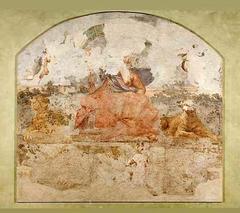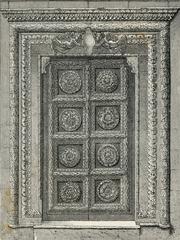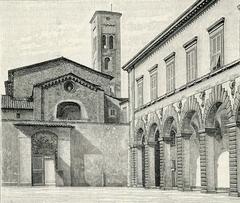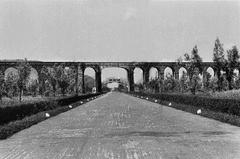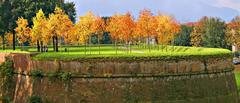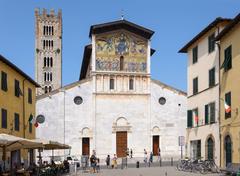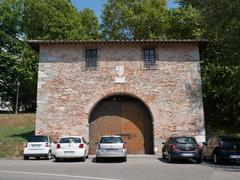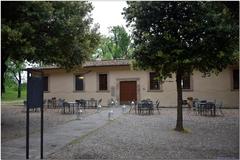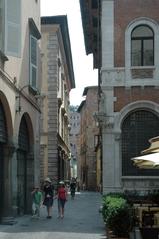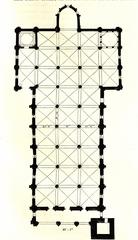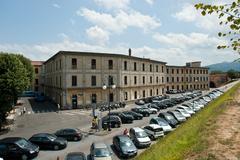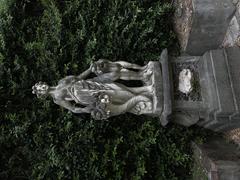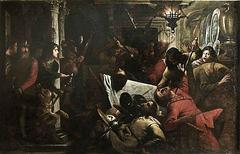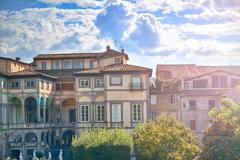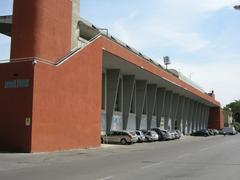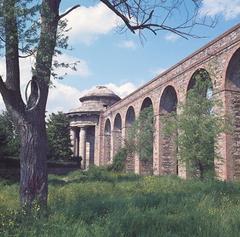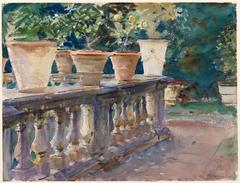
Comprehensive Guide to Visiting Palazzo Ducale, Lucca, Italy
Date: 19/07/2024
Introduction
Nestled in the heart of Lucca, Italy, the Palazzo Ducale is a historical and architectural marvel that beckons visitors from around the world. Initially constructed in the 14th century as a fortress for the Guinigi family, this splendid palace has evolved through various architectural styles, reflecting the rich tapestry of Lucca’s political and cultural history (Discovering Palazzo Ducale). Over the centuries, it has served as the residence for Lucca’s rulers, from the Guinigi family to the Bourbon-Parma dynasty, and even Napoleon’s sister, Elisa Bonaparte Baciocchi. Today, the Palazzo Ducale stands as a testament to the city’s resilience and artistic heritage, offering a unique glimpse into the past through its grandiose architecture and opulent interiors. Whether you’re an architecture enthusiast, a history buff, or simply a curious traveler, the Palazzo Ducale promises an enriching experience filled with artistic splendor and historical significance.
Table of Contents
- Introduction
- History of Palazzo Ducale
- Architectural Highlights
- Cultural Significance
- Visiting Information
- Travel Tips and Nearby Attractions
- Conclusion
- FAQ
- References
History of Palazzo Ducale
Origins and Early History
The Palazzo Ducale, also known as the Ducal Palace, dates back to the 14th century when it was initially constructed as a fortress for the Guinigi family, the ruling family of Lucca. Built on the site of an earlier medieval fortress, the palace has undergone numerous renovations and expansions over the centuries, reflecting the evolving political and social landscape of Lucca.
Renaissance Transformations
During the Renaissance, architect Bartolomeo Ammannati transformed the Palazzo Ducale, redesigning it to reflect the grandeur of Renaissance architecture. His work included the addition of a grand staircase, elegant courtyards, and ornate facades, making the palace a symbol of the power and prestige of Lucca’s ruling families.
Napoleonic Era
In 1805, Lucca was annexed by Napoleon Bonaparte, and the palace became the residence of his sister, Elisa Bonaparte Baciocchi, the Princess of Lucca. Elisa modernized the palace with neoclassical elements and luxurious interiors, making it the administrative center of the Napoleonic government in Lucca.
Post-Napoleonic Period
After Napoleon’s fall, the Palazzo Ducale continued to play a central role in Lucca’s political life. In the 19th century, it became the seat of the government of the newly established Duchy of Lucca, ruled by the Bourbon-Parma family. The palace was further expanded to accommodate the ducal court’s needs, with notable additions like the Sala del Trono (Throne Room) and the Sala degli Staffieri (Room of the Footmen).
Modern Era
In the 20th century, the Palazzo Ducale underwent a series of restorations to preserve its historical and architectural significance. Today, it serves as the headquarters of the provincial government of Lucca and is open to the public for tours and cultural events (Palazzo Ducale).
Architectural Highlights
The Palazzo Ducale is renowned for its architectural highlights:
- The Grand Staircase: Designed by Bartolomeo Ammannati, this Renaissance masterpiece features elegant marble steps and intricate balustrades.
- The Courtyards: Adorned with beautiful arcades and loggias, the courtyards provide a serene and picturesque setting.
- The Sala del Trono: A stunning example of neoclassical design, with an ornate ceiling, gilded decorations, and opulent furnishings.
- The Sala degli Staffieri: This room showcases exquisite frescoes and stucco work, reflecting the artistic talents of the period.
Cultural Significance
The Palazzo Ducale holds immense cultural significance for Lucca. It has been the site of numerous historical events, including royal ceremonies, political meetings, and cultural gatherings, making it a symbol of Lucca’s heritage and identity.
Visiting Information
Visiting Hours and Tickets
Visitors can explore the many rooms and courtyards of the Palazzo Ducale. Guided tours are available, providing detailed insights into the palace’s history and architecture. For current visiting hours, ticket prices, and other visitor information, please visit the official Palazzo Ducale website.
Accessibility
The Palazzo Ducale is committed to being accessible to all visitors, including those with disabilities. Please check the official website for specific accessibility information and accommodations.
Special Events and Guided Tours
The palace hosts various cultural events, including art exhibitions, concerts, and theatrical performances. Special guided tours are also available, offering an in-depth look at the palace’s rich history and architectural features.
Travel Tips and Nearby Attractions
When visiting the Palazzo Ducale, consider exploring other nearby attractions in Lucca:
- Lucca Cathedral: A beautiful example of Romanesque architecture located just a short walk from the palace.
- Piazza dell’Anfiteatro: A unique oval-shaped piazza built on the remains of an ancient Roman amphitheater.
- Guinigi Tower: A medieval tower with a rooftop garden offering panoramic views of the city.
Conclusion
The Palazzo Ducale is a testament to Lucca’s rich history and cultural heritage. Its architectural splendor and historical significance make it a must-visit destination for anyone interested in the history and culture of Italy. Whether exploring its grand halls or attending a cultural event, visitors to the Palazzo Ducale are sure to be captivated by its timeless beauty and historical importance.
FAQ
Q: What are the Palazzo Ducale visiting hours? A: Visiting hours vary depending on the season and special events. Please check the official Palazzo Ducale website for up-to-date information.
Q: How much do tickets to the Palazzo Ducale cost? A: Ticket prices can vary. For the latest pricing information, visit the official website.
Q: Are guided tours available at the Palazzo Ducale? A: Yes, guided tours are available and provide detailed insights into the history and architecture of the palace.
Q: Is the Palazzo Ducale accessible to visitors with disabilities? A: The palace is committed to accessibility. Please check the official website for specific information on accommodations.
Q: What are some nearby attractions to visit in Lucca? A: Nearby attractions include Lucca Cathedral, Piazza dell’Anfiteatro, and Guinigi Tower.
Call to Action
Plan your visit to the Palazzo Ducale today! For more information and to stay updated on upcoming events, follow us on social media or download the Audiala mobile app.
